
Giorgio de Chirico: 1924 at Fondazione Accorsi-Ometto, Turin
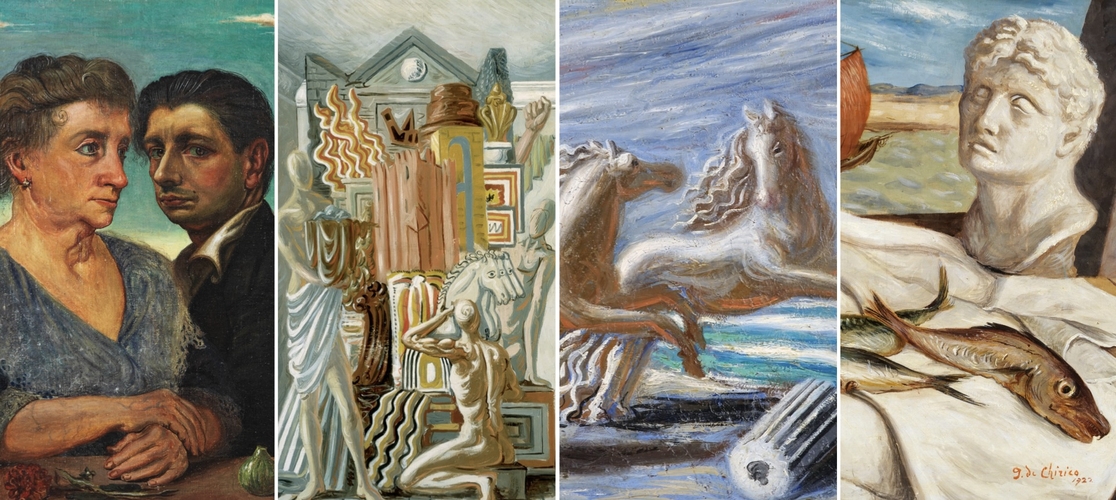
On the occasion of the centenary of Surrealism (1924-2024), the Fondazione Accorsi-Ometto in Turin, Italy, dedicates a revolutionary exhibition that will be open until March 2, 2025 to Giorgio de Chirico, recognized by André Breton, the founder of the movement, as a precursor to Surrealism. This exhibition, curated by Victoria Noel-Johnson, highlights the period between 1921 and 1928, formative years that coincide with the birth of Surrealism, marked by the publication of Breton's Manifeste du surréalisme in October 1924.
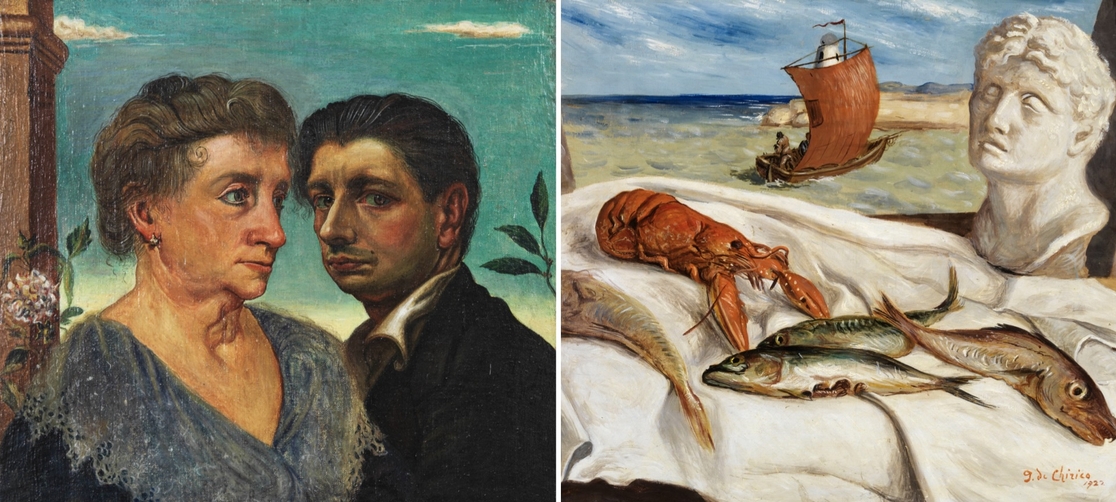
LEFT: Giorgio de Chirico, Self-portrait with Mother, 1922 (signed 1921), Oil on canvas, 65x55 cm, Mart, Museum of Modern and Contemporary Art of Trento and Rovereto, VAF Foundation Collection, inv. MART 2883, VAF 1266, © Giorgio de Chirico by SIAE 2024; RIGHT: Giorgio de Chirico, The Lobster (Still Life with Lobster and Cast), 1922, Oil on canvas, 77x99 cm. Farsettiarte, Prato, © Giorgio de Chirico by SIAE 2024
The Deep Connection Between De Chirico and Surrealism
The exhibition aims to explore Giorgio de Chirico's fundamental role in the birth and development of Surrealism and to analyze his complex relationship with André Breton, the poet Paul Éluard, and his wife Gala, who later married Salvador Dalí. The display features over 70 works, including around fifty paintings and works on paper by de Chirico, as well as about twenty portraits of artists, poets, and surrealist writers photographed by Man Ray and Lee Miller. These works come from prestigious private collections and eminent museums and institutions such as the GNAM in Rome and the MART in Trento.
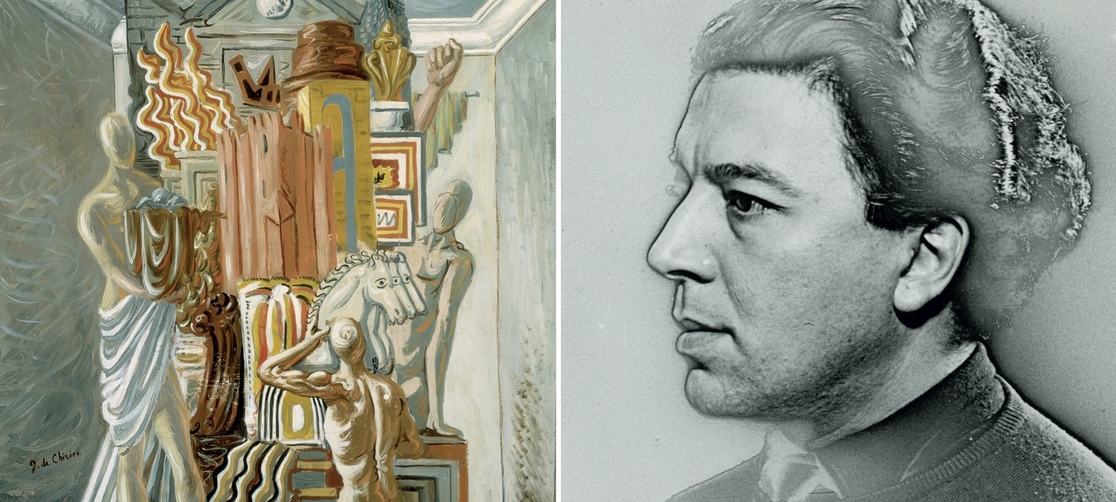
LEFT: Giorgio de Chirico, Makers of Trophies, circa 1925-1928, Oil on canvas, 90x71 cm, Boschi Di Stefano House Museum, Milan, © Giorgio de Chirico by SIAE 2024; RIGHT: Man Ray, André Breton, circa 1929 (new print circa 1980), Solarized black and white photographic print, 28.8x19.8 cm, Private collection, courtesy of Giò Marconi, Milan © Man Ray by SIAE 2024
The Philosophical Aspect in the Works of De Chirico
Giorgio de Chirico's metaphysical world is distinguished by its profound philosophical reflection on existence, identity, and memory. These themes are manifested through deserted urban landscapes and classical architecture, recurring elements in his works that create a sense of mystery and alienation. De Chirico described his art as "the painting of what cannot be seen," exploring concepts such as time, eternity, and the past, reflecting his readings of Nietzsche and Schopenhauer.
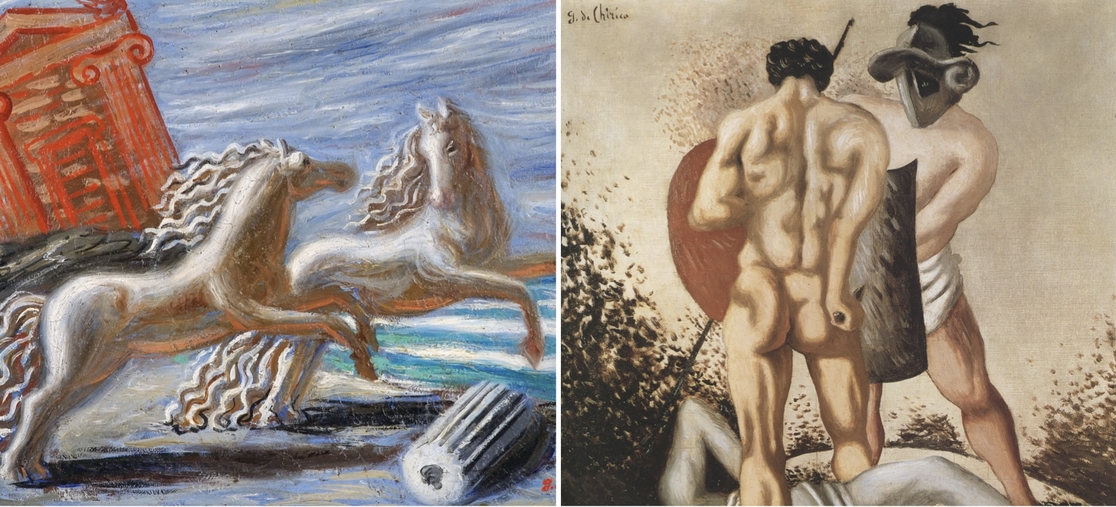
LEFT: Giorgio de Chirico, Ancient Horses, 1927. Oil on canvas, 32.5x45 cm, Private collection. © Giorgio de Chirico by SIAE 2024; RIGHT: Giorgio de Chirico, Gladiators' Combat (End of Combat), 1927, Oil on canvas, 90x70 cm. Private collection, © Giorgio de Chirico by SIAE 2024
Distinctive Characteristics of De Chirico's Works
Giorgio de Chirico's artworks are immediately recognizable for their empty urban spaces, long shadows, and solitary figures or mannequins that often populate the scenes. These elements give his canvases a suspended and dreamlike atmosphere, while the play on perspective and the use of classic symbols, such as distant trains, stopped clocks, and starry maps, introduce a temporal dimension that is both static and infinite. Architecture is another dominant aspect in his works; classical columns, arches, and statues create a choreography of forms that seem to emerge directly from the subconscious, evoking a reality that transcends ordinary vision and touches the realms of the unreal and metaphysical.
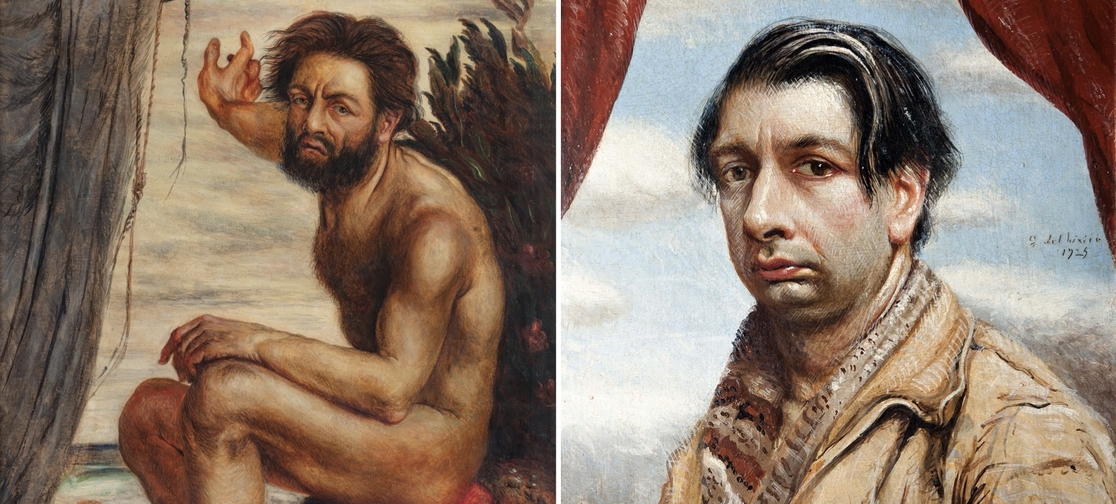
LEFT: Giorgio de Chirico, Ulysses (Self-Portrait), 1924. Tempera on canvas, 92x71 cm, Private collection.© Giorgio de Chirico by SIAE 2024; RIGHT: Giorgio de Chirico, Self-Portrait, 1925, Oil on canvas, 62 x 46 cm. National Gallery of Modern Art, Rome, inv. 2680. © Giorgio de Chirico by SIAE 2024
This exhibition provides a unique opportunity for the public to explore and deeply understand the complex dynamics and interactions that defined Surrealism, one of the most revolutionary artistic movements of the 20th century. By celebrating the works of Giorgio de Chirico, the exhibition offers a new interpretation of his contribution, highlighting his crucial role not only as a pioneer but also as a pillar in the history of Surrealism. The significance of de Chirico as both an artist and a theorist further illuminates his lasting impact and his influence on modern art.
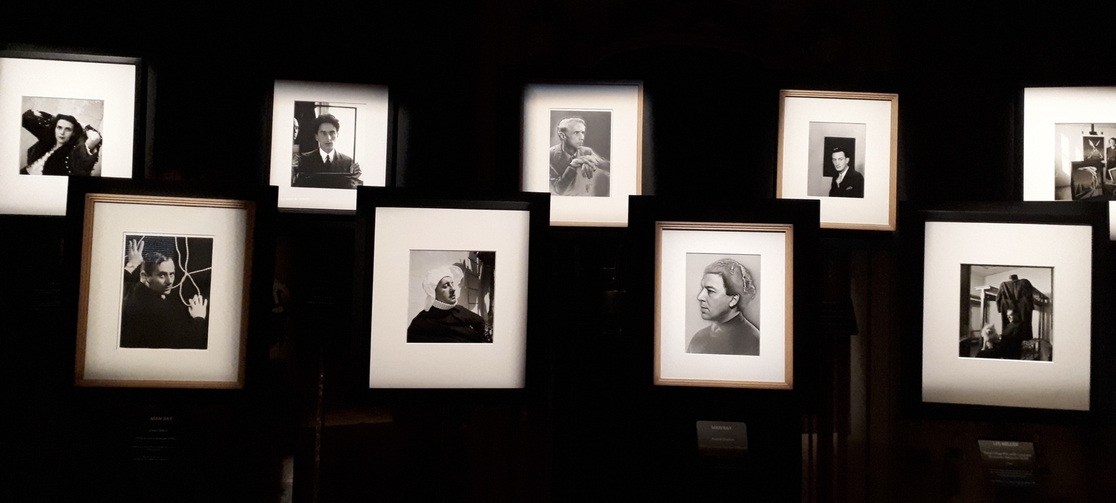 Exhbitions Views: Giorgio di Chirico, 1924 at Fondazione Accorsi-Ometto di Torino Exhbitions Views: Giorgio di Chirico, 1924 at Fondazione Accorsi-Ometto di Torino
LOT-ART SERVICES FOR COLLECTOR
NEW! Best Deals: Bid on highly liquid lots with an estimate below the historical sale price. Make smart investment decisions powered by Market Analytics. Discover Best Deals >>
Market Analytics: Lot-Art big data analytics assess the liquidity, actual value, investment risk and profitability of fine art (contemporary art, modern art, old masters) and luxury collectibles (timepieces), enabling informed investment decisions within a strategy of portfolio diversification. Discover Market Analytics >>
Lot-Art Memberships: Receive Personalized Alerts on your favorite artists and collectibles at auction worldwide to never miss a bid! Subscribe now >>
Lot-Art.com is the world's largest search engine & aggregator of art and collectibles linking to 3800+ auction houses! Find best deals from your favorite artists and brands among 1 million lots for sale every day in our upcoming section >>
LOT-ART | The Art Investment Platform
Lot-Art.com is the largest search engine & aggregator for auctions of art and collectibles linking to 3800+ auction houses! Find best deals from your favorite artists and brands among 1 million lots for sale every day in our upcoming section.
LOT-ART | The Art Investment Platform
contact@lot-art.com
|
|
|
|
|---|
Don't want these emails anymore? |
|
|
|---|
|